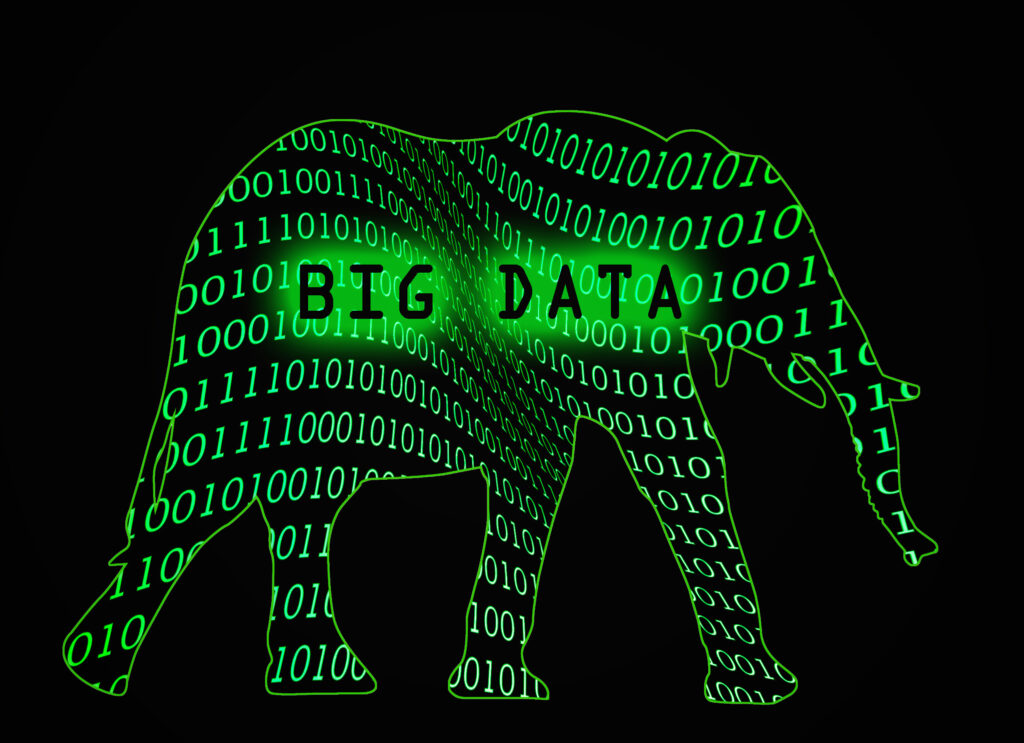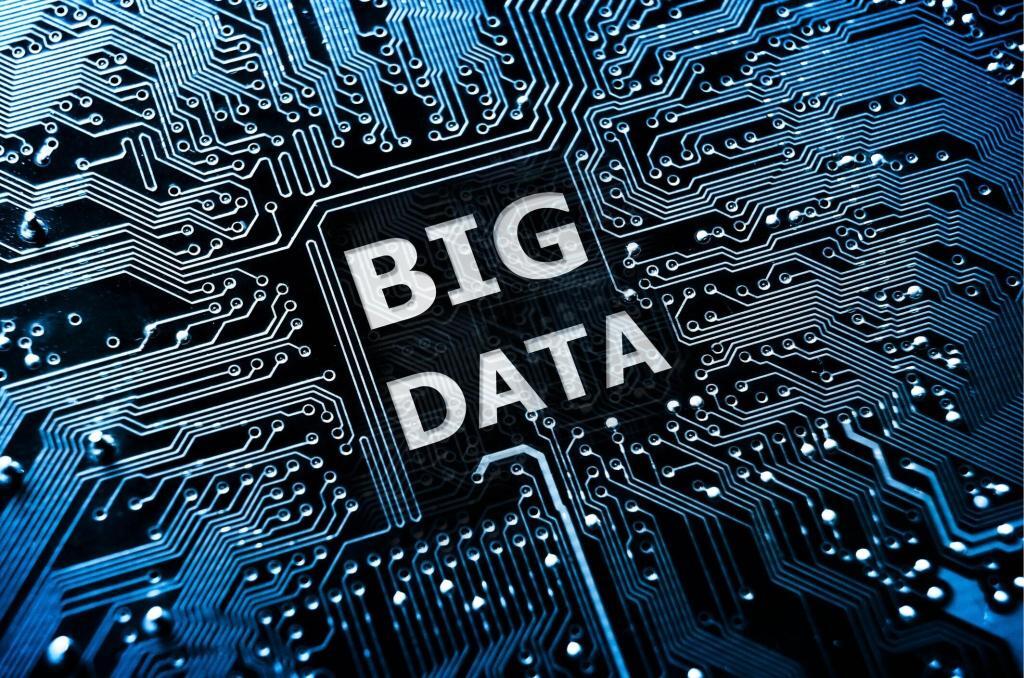Big data revolutionises medical imaging, enhancing diagnostics and treatments with rapid, complex data analysis.
Unlocking Diagnostic Innovations: The Impact of Big Data on Medical Imaging
Big data is revolutionising the field of medical imaging, offering unprecedented opportunities to enhance patient care. Medical imaging, which includes technologies like X-rays, CT scans, MRI, and ultrasound, generates massive amounts of data. The advent of big data analytics allows for the extraction of valuable insights from these large image datasets, potentially improving diagnostic accuracy, personalising treatment plans, and advancing research.
When referring to big data in medical imaging, we’re talking about the vast quantities of imaging data generated through various modalities such as X-rays, CT scans, MRI scans, ultrasound, and PET scans, among others. This data is characterised by its large volume and complexity, diversity, and speed at which it must be processed and analysed.
The Potential of Big Data in Medical Imaging: Volume, Velocity, Variety, Veracity, and Value
The following characteristics can be applied to medical imaging:
- Volume: Medical imaging devices produce a vast amount of data. A single CT scan can generate hundreds of images, and with thousands of scans performed daily worldwide, the data quickly adds up to petabytes. A petabyte is equal to one quadrillion (1,000,000,000,000,000) bytes, 1,000,000 GBs, or 1,000 TBs.
- Velocity: Medical images are generated at a very high speed in a hospital daily. This requires quick processing and analysis to be useful in a clinical setting.
- Variety: Medical imaging data comes in various formats and from different imaging modalities – each with its own parameters and use cases. Some are structured, and some are unstructured, which adds to data management and analysis complexity.
- Veracity: The accuracy and quality of medical images are vital. Hence, big data solutions in medical imaging also focus on maintaining the integrity and trustworthiness of the data.
- Value: The ultimate goal of big data in medical imaging is to extract meaningful insights that can lead to better patient outcomes, more efficient operations, and advancements in medical research.
In practical terms, big data in medical imaging involves using advanced computational tools to handle and analyse this data for various purposes:
- Disease Detection and Diagnosis: Big data tools can detect patterns indicative of disease, often before they are apparent to the human eye.
- Treatment Monitoring: Over time, images can be analysed to monitor the progress of a patient’s treatment.
- Research: Large datasets of anonymised medical images can be used to discover new diagnostic markers or to develop and train machine learning models that can be applied clinically.
- Operational Efficiency: Analysis of imaging data can help streamline imaging departments’ workflow, predict imaging equipment maintenance, and improve patient scheduling.
The Integration of Big Data, AI, and Machine Learning in Medical Imaging for Precision Medicine
The utilisation of big data in medical imaging is an ongoing evolution, harnessing the power of AI and machine learning to provide deeper insights and to facilitate personalised and precision medicine. As technology advances, it will become an even more integral part of healthcare delivery and medical research.
By utilising big data analytics, healthcare professionals can identify patterns and anomalies in medical images that might be invisible to the human eye. For instance, machine learning algorithms can be trained on thousands of images to detect early signs of diseases such as cancer, which could lead to earlier interventions and better outcomes for patients.
Moreover, big data can facilitate more personalised medicine. Analysing a patient’s imaging data alongside other personal health information can give a more holistic understanding of the patient’s condition. This integrative approach can help tailor treatments to the individual’s unique situation rather than relying on a one-size-fits-all model.
Another advantage is the optimisation of workflow in healthcare settings. Big data can help manage the vast number of images more efficiently, categorise them, and facilitate quicker retrieval when needed. This efficiency saves healthcare providers time and can lead to more rapid diagnoses for patients.
However, there are challenges that come with the integration of big data in medical imaging. The sheer volume of data requires substantial storage solutions and robust computing power to process and analyse the information. Data privacy and security are also of paramount importance, as medical images contain sensitive personal health information that must be protected.
To ensure that the benefits of big data are fully realised in medical imaging, there must be a collaborative effort among technologists, healthcare providers, and policymakers. Investment in the right technology infrastructure and establishing strict data security and privacy guidelines is critical.
Envisioning the Future: The Impact of Big Data on Predictive Diagnostics and Personalised Treatment in Medical Imaging
In the future, big data in medical imaging could lead to the development of predictive models for disease progression, the discovery of new biomarkers for various illnesses, and more efficient clinical trials for new treatments. It holds the promise of enhancing the precision of medicine, improving healthcare delivery, and ultimately, resulting in better health outcomes.
The intersection of big data and medical imaging is a dynamic and evolving field, and as technology advances, it will continue to shape the future of medicine. The potential to transform patient care is immense, and while the road ahead may be complex, the journey promises to be transformative for both healthcare providers and patients.
Big data’s role in the analysis of X-ray and CT scans is growing exponentially with the advancement of computing power and machine learning algorithms. The following examples demonstrate how big data is used in this context:
- Disease Detection and Diagnosis:
- Tuberculosis Detection: Researchers have developed AI models that can sift through thousands of chest X-rays to identify signs of tuberculosis, often with higher accuracy than human radiologists.
- Stroke Identification: CT scans of patients suspected of having a stroke can be analysed using big data tools to quickly identify the type of stroke, which is crucial for immediate and appropriate treatment.
- Pattern Recognition and Predictive Analytics:
- Cancer Prognosis: By analysing vast datasets of X-ray and CT images, algorithms can detect early signs of lung cancer, sometimes even predicting the aggressiveness of the tumour based on patterns that are not evident to the human eye.
- Bone Health: Big data can be used to analyse X-rays to detect early signs of osteoporosis, allowing for preventative measures to be taken before fractures occur.
- Treatment Planning and Management:
- Radiation Therapy: For cancer treatment, big data analysis helps in planning the optimal radiation therapy approach by analysing previous CT scans and treatment outcomes, leading to personalised and effective treatment plans.
- Surgical Planning: CT scans can be analysed to create 3D models of an individual’s anatomy, helping surgeons to plan complex procedures.
- Workflow Optimisation:
- Automated Triage: Emergency room X-ray and CT scans can be automatically analysed to prioritise cases based on urgency, ensuring that patients with critical conditions are attended to promptly.
- Resource Allocation: By analysing trends in imaging data, hospitals can predict peak times for certain scans and allocate resources more efficiently.
- Research and Clinical Trials:
- Disease Progression: Longitudinal studies using X-ray and CT scan data can help in understanding the progression of chronic diseases, such as COPD or heart disease, by analysing changes over time across a large patient population.
- Drug Development: Imaging data from clinical trials can be analysed to assess the efficacy of new pharmaceuticals, with algorithms detecting subtle changes in imagery that may indicate the drug’s impact.
- Image Enhancement and Reconstruction:
- Noise Reduction: Advanced algorithms can analyse CT scans to reduce noise and enhance image quality without increasing the radiation dose to the patient.
- Reconstruction Algorithms: Big data enables the use of sophisticated reconstruction algorithms that can create more accurate and detailed images from CT scans, aiding in better diagnosis.
- Integration with Electronic Health Records (EHR):
- Holistic Patient View: By integrating imaging data with EHRs, big data analytics can provide a more comprehensive view of a patient’s health status, aiding in diagnosis and monitoring of treatment response.
These examples highlight the transformative potential of big data in medical imaging, enabling more accurate diagnoses, personalised treatments, and improved patient outcomes. As technology advances, the scope and impact of big data in medical imaging will continue to expand.
Big Data’s Role in Advancing Diagnostic Precision, Predictive Analytics, and Personalised Medicine in Medical Imaging
The future of big data in medical imaging is a beacon of promise for transformative changes in healthcare. As big data intersects with advanced imaging technologies, it is poised to unlock a new era of diagnostic, predictive, and therapeutic possibilities, ultimately enhancing patient care and medical research.
Diagnostic Precision and Speed
The integration of big data with medical imaging is expected to enhance diagnostic precision significantly. Sophisticated algorithms powered by machine learning will analyse vast datasets of medical images, identifying patterns and anomalies with a level of accuracy that surpasses human capability. For example, subtle changes in tissue density or blood flow that might indicate the early onset of diseases like cancer or Alzheimer’s could be detected much earlier, allowing for prompt intervention.
Predictive Analytics in Imaging
Predictive analytics will leverage historical and real-time imaging data to forecast disease progression and patient outcomes. By analysing big data from imaging results, healthcare providers will be able to predict complications or relapses, making preemptive healthcare a reality. This could drastically reduce the rates of emergency hospitalisations and improve chronic disease management.
Personalised Treatment Regimens
As big data facilitates a deeper understanding of disease mechanisms and patient responses to various treatments, medical imaging will play a key role in personalising medicine. Imaging biomarkers, identified through big data analysis, will inform more targeted and effective treatment regimens, minimising the trial-and-error approach currently prevalent in many treatment plans.
Integration with Genomics and Other Data
The future will seamlessly integrate imaging data with genomics and other biometric data, giving a comprehensive view of a patient’s health status. Big data analytics will correlate changes in medical images with genetic information, enabling the development of highly personalised healthcare strategies based on a patient’s unique genetic makeup.
Efficiency and Cost Reduction
Big data will drive efficiency in medical imaging by optimising the use of imaging resources, reducing the frequency of unnecessary scans, and enhancing image quality. This will save costs and reduce patients’ exposure to radiation. Furthermore, predictive maintenance of imaging equipment, informed by big data, will minimise downtime and extend the lifespan of costly machinery.
Enhanced Image Quality and Reconstruction
Advancements in image reconstruction algorithms, driven by big data, will improve the quality of medical images, allowing for more precise and more detailed visualisations of the human body. This will aid in more accurate diagnoses and could lead to the discovery of new clinical indicators of disease.
AI-driven Workflows
Fueled by big data, artificial intelligence will automate many aspects of medical imaging workflows, from appointment scheduling to image analysis. This will free up radiologists and technicians to focus on more complex cases and patient care rather than routine tasks.
Telemedicine and Remote Diagnostics
Big data will enable the expansion of telemedicine, with medical imaging being a key component. Remote diagnostics will become more prevalent, allowing patients in underserved or remote areas to receive expert opinions without the need for travel.
Challenges and Ethical Considerations
While the future is bright, it is not without challenges. The sheer volume of data presents storage and analysis challenges, requiring robust infrastructure and security measures. Ethical considerations around privacy and consent for the use of medical imaging data will also need to be addressed ensuring that patient rights are upheld in the age of big data.
Education and Training
The role of radiologists and other imaging professionals will evolve. Education and training must be adapted to equip these professionals with the skills to work alongside advanced analytics tools and AI, interpreting complex data and integrating insights into patient care.
The Costs and Value of Integrating Big Data into Medical Imaging Infrastructure
The cost of big data in medical imaging can be substantial and multifaceted, encompassing several areas:
- Infrastructure Expenses: Storing and processing large volumes of medical imaging data requires significant IT infrastructure. This includes data centres, servers, cloud storage solutions, and the accompanying maintenance and energy costs. As the volume of data grows, so does the need for more storage space and more powerful processing capabilities.
- Software and Analytics Tools: Advanced analytics tools and software, often powered by artificial intelligence (AI) and machine learning algorithms, are required to handle, process, and analyse medical imaging data. These tools can be expensive to develop, purchase, and license.
- Compliance and Security Costs: Medical imaging data is subject to stringent regulatory compliance standards, such as HIPAA in the United States, which govern the privacy and security of patient information. Ensuring that big data practices comply with these regulations adds additional costs for encryption, data protection measures, and regular security audits.
- Personnel and Training: Skilled personnel, including data scientists, IT professionals, and radiologists who are trained in data analytics, are necessary to manage and analyse big data in medical imaging. Hiring and training such staff represents a significant investment for healthcare providers.
- Integration Costs: Integrating big data solutions with existing healthcare IT systems, such as Electronic Health Records (EHRs) and Picture Archiving and Communication Systems (PACS), can be complex and costly. It often requires custom development and ongoing support.
- Operational Disruptions: Implementing big data solutions in medical imaging can cause temporary disruptions to existing workflows. There may also be ongoing costs associated with optimising these workflows to accommodate new big data tools and processes.
- Opportunity Costs: Investments in big data infrastructure and tools may divert resources from other areas of a healthcare organisation, representing an opportunity cost.
- Data Management: The cost of curating, labelling, and managing large datasets for accuracy and consistency is substantial. This is a critical step, especially when using data to train AI models for diagnostic purposes.
- Research and Development: For organisations involved in the development of big data applications in medical imaging, there are substantial R&D costs to consider, including the cost of clinical trials to validate new technologies.
However, while the costs are significant, it’s also important to consider the potential savings and value generated by big data in medical imaging:
- Improved Diagnostic Accuracy: Big data can lead to more accurate diagnoses, which can reduce the costs associated with misdiagnosis or delayed diagnosis.
- Operational Efficiencies: Over time, big data analytics can streamline operations, reducing waste and improving patient throughput.
- Preventive Care: By enabling early disease detection, big data can help shift the focus towards preventive care, potentially reducing the need for expensive treatments for advanced diseases.
Therefore, while the initial outlay for big data in medical imaging is considerable, the potential return on investment could be significant in terms of both financial outcomes and patient care improvements. Healthcare organisations’ challenge is balancing these costs with the benefits while continually adapting to technological advancements.
Defending Diagnostics: Addressing Cyber Threats in the Age of Digital Medical Imaging
Cyber attacks on medical imaging systems that utilise big data are a growing concern in healthcare cybersecurity. As healthcare organisations increasingly rely on digital technologies and the storage and analysis of large volumes of medical images, they become more vulnerable to various types of cyber threats. Here are some of the potential cyber attacks and their implications:
- Ransomware Attacks:
- Description: Malicious software that encrypts data, rendering it inaccessible until a ransom is paid.
- Impact: It can halt the operations of radiology departments, leading to delays in diagnosis and treatment.
- Data Breaches:
- Description: Unauthorised access to confidential patient data can be stolen and sold or used in identity theft.
- Impact: This can lead to the exposure of sensitive patient information, legal consequences, and loss of patient trust.
- Distributed Denial of Service (DDoS) Attacks:
- Description: Overwhelms the hospital’s network with a flood of internet traffic, which can incapacitate imaging and data analysis services.
- Impact: This can cause system outages, disrupting access to critical imaging data and potentially impacting patient care.
- AI Model Corruption:
- Description: Attackers inject malicious data into the datasets used to train AI models, leading to incorrect learning and false outputs.
- Impact: This can result in misdiagnoses and inappropriate treatment plans.
- Man-in-the-Middle Attacks:
- Description: Interception of data transmission between two parties, potentially modifying the information.
- Impact: This can lead to alteration of medical images or theft of data, affecting clinical decisions.
- Insider Threats:
- Description: Employees or contractors misuse their access to imaging data for malicious purposes.
- Impact: This can result in intentional data breaches or damage to data integrity.
- Software Exploits:
- Description: Attackers exploit security vulnerabilities in outdated software or operating systems used in imaging devices.
- Impact: This can lead to unauthorised access and control over medical imaging systems.
The consequences of these attacks can be severe, ranging from direct harm to patient care to significant financial and reputational damage to healthcare institutions. To combat these threats, healthcare organisations are investing in advanced cybersecurity measures such as:
- Encryption: Ensuring all medical imaging data is encrypted both in transit and at rest.
- Access Controls: Implementing strict access controls and authentication measures to ensure that only authorised personnel can access sensitive data.
- Regular Software Updates: Keeping all systems and software up to date with the latest security patches.
- Employee Training: Educate staff about phishing attacks and other common cyber threats.
- Network Security: Utilising firewalls, intrusion detection systems, and regular network monitoring to detect and prevent unauthorised access.
- Disaster Recovery Planning: Establishing robust disaster recovery and data backup plans to mitigate the impact of any data loss.
- AI and Machine Learning: Employing advanced AI algorithms to detect and respond to unusual patterns that may indicate a cyber attack.
By proactively addressing these vulnerabilities, the healthcare sector can protect itself against the growing threat of cyber attacks on medical imaging systems. The goal is to ensure the confidentiality, integrity, and availability of medical images, which are critical for patient care and the healthcare system’s operation.
Conclusion
The future of big data in medical imaging is one of both exciting potential and significant responsibility. It holds the promise of earlier diagnoses, personalised treatments, and improved patient outcomes. As we continue to navigate the complexities of this data-rich landscape, the focus must remain on harnessing its power responsibly, with an unwavering commitment to improving health and well-being for all.
The integration of big data into medical imaging marks a pivotal advancement in healthcare. By harnessing the immense power of vast data sets, clinicians can unlock detailed insights that lead to more accurate diagnoses, predict patient outcomes with greater confidence, and personalize treatments to an unprecedented degree.
This data-driven revolution enhances the entire healthcare delivery model, from point-of-care diagnostics to long-term treatment strategies. As technology continues to evolve, the potential for big data to further refine medical imaging—and, by extension, patient care—only grows.
The future of medical imaging, underpinned by big data, promises a new era of precision medicine where data analytics and healthcare converge to produce the best patient outcomes. This is not just an enhancement of existing practices but a fundamental shift towards a more informed, efficient, and patient-centric approach to healthcare.
Disclaimer
The content presented in this article is intended for informational and educational purposes only. It does not constitute medical advice, diagnosis, or treatment, and should not be relied upon as such. The information provided reflects the authors’ interpretation of current developments in the use of big data and medical imaging and is not a substitute for professional medical consultation, clinical judgment, or regulatory guidance.
Open Medscience and the authors do not make any warranties or representations regarding the accuracy, completeness, timeliness, or suitability of the information provided. While efforts have been made to ensure accuracy, medical data and technology evolve rapidly, and the practical applications described herein may not reflect the most current standards, legal requirements, or clinical practices.
Any examples of diagnostic technologies, machine learning tools, or data analytics methods are for illustrative purposes only. The inclusion of such examples does not imply endorsement or certification of these technologies. Readers are encouraged to verify all claims and consult relevant healthcare professionals, legal advisors, or regulatory bodies before applying any concepts discussed in this article to clinical, research, or operational settings.
Furthermore, the use of big data in medical imaging involves complex ethical, legal, and technical considerations, including patient privacy and data security. Institutions or individuals seeking to implement such technologies are responsible for ensuring full compliance with applicable laws, regulations, and best practices.
Open Medscience accepts no liability for any direct, indirect, incidental, or consequential loss or damage resulting from the use of or reliance on any information contained in this publication.
You are here: home » diagnostic medical imaging blog »



